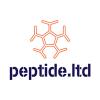For those of you that are unaware, science.bio released a new nootropic compound called compound 7P. There is very little information about this compound and there is a complete lack of anecdotes relating to its effects. I was able to find this (https://pubmed.ncbi....h.gov/27007292/) article relating to its effects, where it showed potent stimulation of axon regeneration in vitro in cells isolated from the retina, cerebral cortex, and hippocampus, as well as in vivo effects on optic nerve regeneration. While the implications for this could be major in those with nerve damage and diabetic retinopathy, I'm quite interested in the effects of this compound on amphetamine abuse-induced brain damage, which involves degeneration of dopaminergic nerve terminals. Combination with, say, Selegiline could lead to immense improvement of neurocognitive function. Has anyone else been able to find any more information on this compound, or could those with more knowledge of chemistry try and guess at the bioavailability and BBB-penetrability of this compound? Is anyone affluent enough to try it with so little information about an effective ROA or dosage? I know someone with amphetamine abuse-related damage that would be willing to test out the compound if an ROA or dosage were determined, or if someone would purchase it, but not waste the money otherwise if it won't even cross the BBB, for example. So far it seems like there's only documented effects in cultured neurons or segments of optic nerve removed from mice (yikes!).

Compound 7P - Potent neurogenic compound with implications for diabetic retinopathy and ampetahmine-related damage?
#1
Posted 27 July 2020 - 03:56 AM
#2
Posted 19 December 2020 - 01:33 PM
Tested oral route, with a micro-spoon the amount is around 1mg and able to feel as sharp mind nootropic.
#3
Posted 20 December 2020 - 04:29 AM
Lots of Alibaba companies sell it but besides this thread I have never heard about anyone using it.
I was going to buy it.
Please share your experiences
#4
Posted 22 December 2020 - 02:23 PM
Very few info over the net, the shelf life is unknown.
I discontinued the use after insomnia issues.
#5
Posted 24 December 2020 - 11:43 AM
Very few info over the net, the shelf life is unknown.
I discontinued the use after insomnia issues.
Thanks for the summary - what was the dosage you were taking?
#6
Posted 27 December 2020 - 12:49 PM
Dosage with a micro spoon can be 2mg or less, taken 2 times at day. Last day also intake Hypoxen.
#7
Posted 26 January 2021 - 10:34 AM
Have some from science.bio. Took some via sublingual route. No noticeable effects so far.
Was the insomnia cumulative or sudden after the first dose?
#8
Posted 26 January 2021 - 11:35 AM
Last report was taken with the weird stimulant Hypoxen, that causes insomnia again when taken alone.
One report in reddit tells using 5-10mg
https://www.reddit.c...on_compound_7p/
Manufacturer wisepowder indication is half life 1-2 hour, dosage 5000mg what seems excessive...
https://www.wisepowd...rt-drug-powder/
Also same link tells as dosage for N-Acetyl-L-cysteine ethyl ester powder is 5000mg while i read ergogenic health website is 100mg-300mg.
#9
Posted 26 January 2021 - 03:50 PM
Last report was taken with the weird stimulant Hypoxen, that causes insomnia again when taken alone.
One report in reddit tells using 5-10mg
https://www.reddit.c...on_compound_7p/
Manufacturer wisepowder indication is half life 1-2 hour, dosage 5000mg what seems excessive...
https://www.wisepowd...rt-drug-powder/
Also same link tells as dosage for N-Acetyl-L-cysteine ethyl ester powder is 5000mg while i read ergogenic health website is 100mg-300mg.
Thank you. Will look out for any cumulative effects.
#10
Posted 26 January 2021 - 05:01 PM
I've tried 7P intermittently over the past few weeks, with no noticeable effects. Of course, axon regeneration is slow (a few mm/day) and shouldn't produce instant effects.
#11
Posted 26 January 2021 - 07:00 PM
Looking at Table 3 of the paper mentioned in the OP, the fold increase for 7P over control is only 4.2, and this was with an injection directly into the eyes.
The crushed group was injected with compound 7p (0.22 µg in 5µL per eye)sci-hub.st/10.1021/acs.jmedchem.6b00015
The inability of CNS pathways to regenerate after injury can lead to devastating, life-long losses in sensory, motor, and other functions. We report that after injury to the optic nerve, a widely studied CNS pathway that normally cannot regenerate, mobile zinc (Zn2+) increases rapidly in the processes of retinal interneurons (amacrine cells) and then transfers via vesicular release to retinal ganglion cells (RGCs), the injured projection neurons. Eliminating Zn2+ leads to both persistent RGC survival and substantial axon regeneration with a broad therapeutic window. These findings show that signaling between interneurons and RGCs contributes to regulating the fate of RGCs after optic nerve injury, and that Zn2+ chelation may provide a potent therapeutic approach.
Edited by Turnbuckle, 26 January 2021 - 07:18 PM.
Also tagged with one or more of these keywords: compound 7p, nootropic, neurotrophic, amphetamine, tbi, retinopathy
2 user(s) are reading this topic
0 members, 2 guests, 0 anonymous users














































